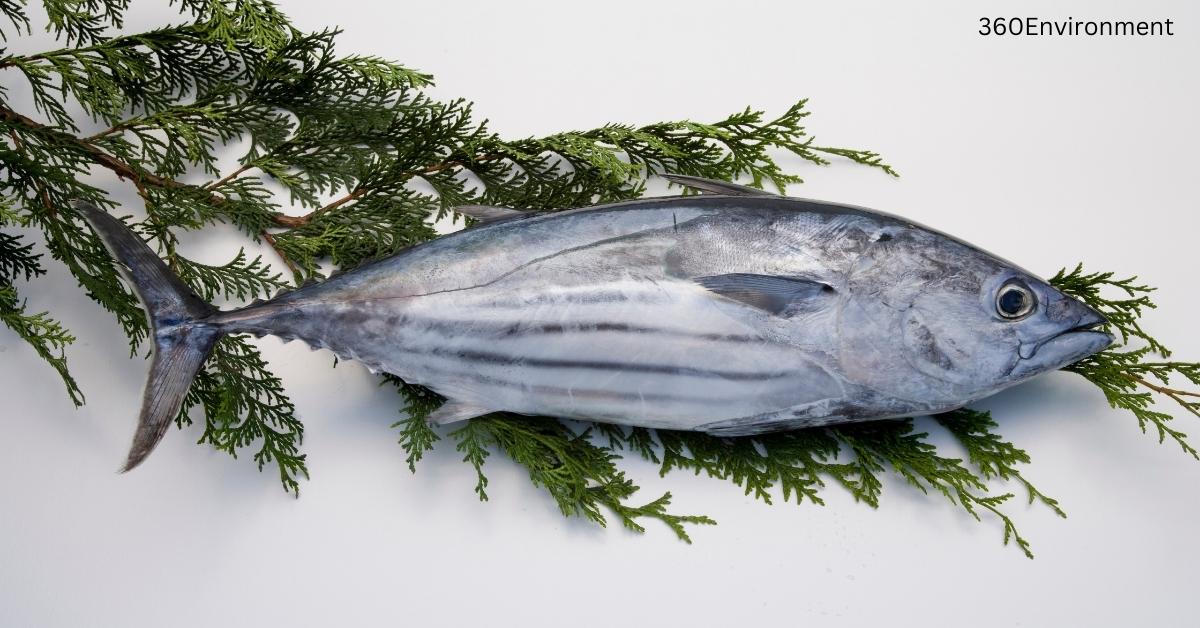Listao tuna, commonly known as skipjack tuna (Katsuwonus pelamis), is one of the most important and abundant tuna species in the world’s oceans. Its distinctive stripes, torpedo-shaped body, and migratory behavior make it a key player in marine ecosystems. Skipjack tuna is particularly valuable to the global fishing industry, representing a significant portion of the tuna caught and consumed worldwide. Despite its economic importance, the environmental niche of the skipjack tuna plays a critical role in maintaining marine ecosystem balance.
In this article, we will delve into the environmental niche of the listao tuna, exploring its habitat preferences, migratory patterns, feeding behavior, ecological role, and interactions with both other species and human activities. Understanding the ecological significance of skipjack tuna is crucial, not only for marine conservation efforts but also for the sustainable management of one of the world’s most exploited fish species.
1. Overview of Listao Tuna (Skipjack Tuna)
The skipjack tuna is a member of the Scombridae family and is widely distributed across the tropical and subtropical oceans. This species is characterized by its rapid growth, high reproductive capacity, and adaptability to a range of marine environments. Skipjack tuna is a pelagic fish, which means it inhabits the open ocean rather than coastal waters.

1.1. Physical Characteristics of Listao Tuna
The listao tuna is known for its distinctive body shape and coloration, which help it thrive in the pelagic zone of the ocean.
- Size and Shape: Skipjack tuna have streamlined, torpedo-shaped bodies that are built for speed and endurance. They are relatively small compared to other tuna species, typically measuring between 40 to 60 centimeters (16 to 24 inches) in length, although some individuals can reach up to 1 meter (39 inches). Adult skipjack tuna weigh between 7 and 22 kilograms (15 to 50 pounds).
- Coloration: Skipjack tuna are easily recognizable by their dark blue or purplish backs and silvery bellies. The most distinctive feature of listao tuna is the presence of four to six horizontal dark stripes that run along their sides, giving them the name “striped tuna” in some regions.
- Body Adaptations: Skipjack tuna are highly adapted to fast swimming. Their bodies are hydrodynamically efficient, with large, powerful tail fins that propel them through the water at speeds of up to 70 kilometers per hour (43 miles per hour). They have a high metabolic rate, which allows them to maintain an active, predatory lifestyle.
1.2. Global Distribution of Skipjack Tuna
Skipjack tuna is a widely distributed species, found in nearly all of the world’s tropical and subtropical oceans. Its range extends from the Atlantic Ocean to the Indian and Pacific Oceans, and it is particularly abundant in the equatorial regions.
- Geographical Range: Skipjack tuna are found in tropical and warm temperate waters between 40°N and 40°S latitude. They are most common in the central and western Pacific Ocean, where warm surface waters create optimal conditions for their survival.
- Migration Patterns: Listao tuna are highly migratory, moving across vast distances in search of food and optimal water temperatures. Their migrations are influenced by ocean currents, water temperature, and the availability of prey species. Seasonal migrations are common, with skipjack tuna moving towards higher latitudes during the summer and retreating to warmer waters in the winter.
- Schooling Behavior: Skipjack tuna are known for their strong schooling behavior. They typically form large schools with individuals of similar size, which can include thousands of fish. These schools often aggregate around floating objects, such as driftwood, seaweed, or man-made debris, and they frequently associate with other marine species, such as yellowfin tuna, dolphins, and sharks.
2. Habitat and Environmental Preferences of Listao Tuna
The environmental niche of the listao tuna is shaped by its preference for warm, tropical waters and its ability to thrive in the open ocean. As a pelagic species, skipjack tuna spend the majority of their lives in the upper layers of the water column, where they feed and migrate across large expanses of the ocean.
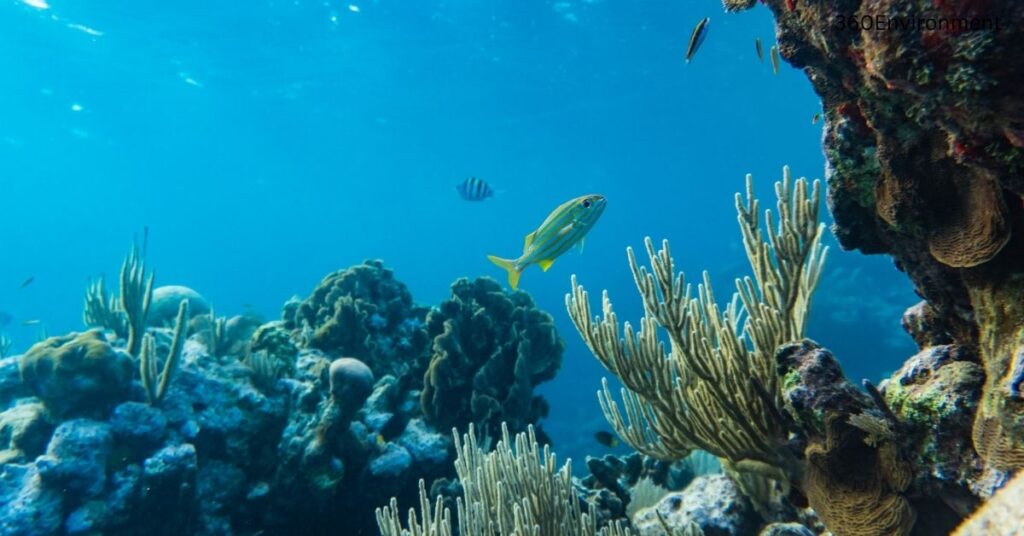
2.1. Temperature and Depth Preferences
Skipjack tuna are highly sensitive to water temperature, which plays a key role in determining their distribution and migration patterns.
- Optimal Temperature Range: Skipjack tuna prefer water temperatures between 20°C and 30°C (68°F to 86°F), making them most abundant in tropical and subtropical regions. These warm waters support their high metabolic rate and active swimming behavior. In colder waters, skipjack tuna tend to move towards the surface to stay within their preferred temperature range.
- Depth Range: Although skipjack tuna are primarily surface-dwellers, they are capable of diving to considerable depths in search of food. Most skipjack tuna activity occurs within the top 260 meters (850 feet) of the water column, but they have been recorded diving to depths of up to 850 meters (2,800 feet).
2.2. Pelagic Zone and Ocean Currents
As a pelagic species, the listao tuna occupies the open ocean, where it follows ocean currents and thermal fronts that bring nutrient-rich waters to the surface. These currents play a vital role in shaping the distribution of skipjack tuna and their prey.
- Ocean Currents: Skipjack tuna often migrate along major ocean currents, such as the Gulf Stream, the North Equatorial Current, and the Kuroshio Current, which transport warm waters and abundant prey species. The convergence of these currents creates nutrient-rich upwelling zones that support high levels of primary production, attracting large schools of skipjack tuna.
- Upwelling Zones: Upwelling zones, where deep, nutrient-rich waters rise to the surface, are key habitats for skipjack tuna. These areas are highly productive, supporting large populations of plankton, small fish, and other prey species that skipjack tuna rely on for food.
2.3. Association with Floating Objects
One of the most unique aspects of skipjack tuna behavior is their tendency to aggregate around floating objects, both natural and artificial.
- FADs (Fish Aggregating Devices): Skipjack tuna are known to form schools around Fish Aggregating Devices (FADs), which are man-made structures designed to attract fish. FADs can be anything from buoys and floating platforms to nets and discarded debris. The presence of FADs alters the natural behavior of skipjack tuna, often increasing their vulnerability to commercial fishing.
- Natural Debris: In addition to artificial FADs, skipjack tuna also aggregate around natural floating objects, such as logs, seaweed, and dead marine animals. These objects provide shelter and serve as meeting points for schools of tuna, as well as for other marine predators like sharks and dolphins.
3. Feeding Behavior and Diet of Skipjack Tuna
The listao tuna is an opportunistic predator with a diverse diet, which includes small fish, crustaceans, squid, and plankton. Its feeding behavior is closely linked to its environment, and the species plays a crucial role in marine food webs.
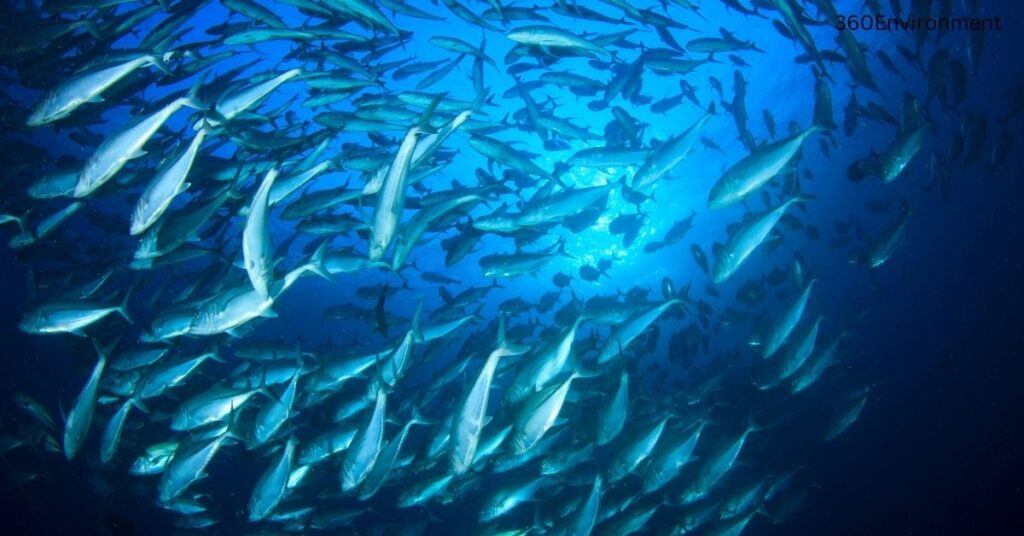
3.1. Diet Composition
Skipjack tuna are carnivorous, feeding on a wide variety of marine organisms depending on their location, water depth, and seasonal availability of prey.
- Small Fish: The primary food source for skipjack tuna includes small schooling fish, such as anchovies, sardines, and herring. These fish are abundant in nutrient-rich waters and are often found in large schools, making them ideal prey for skipjack tuna.
- Cephalopods: Squid and other cephalopods are also a significant component of the skipjack tuna diet. These fast-moving, protein-rich prey are commonly found in deeper waters and during nighttime feeding activities.
- Crustaceans: Skipjack tuna feed on a variety of crustaceans, including krill, shrimp, and small crabs. These prey are particularly important in areas where fish populations are low, providing an alternative food source for tuna.
- Plankton: In certain regions, skipjack tuna may feed on zooplankton, such as copepods and krill, especially when other prey is scarce. Juvenile skipjack tuna rely heavily on plankton before transitioning to a diet of larger prey as they mature.
3.2. Feeding Behavior and Hunting Techniques
Skipjack tuna are highly active predators, using their speed and agility to hunt and capture prey. Their feeding behavior is characterized by rapid bursts of swimming and the ability to chase down fast-moving prey.
- Schooling Behavior and Cooperative Feeding: Skipjack tuna often hunt in large schools, coordinating their movements to herd and trap prey. By working together, they can drive schools of small fish to the surface, making it easier to capture them. This cooperative feeding behavior is particularly effective during feeding frenzies, when large groups of tuna converge on dense prey populations.
- Diurnal and Nocturnal Feeding: Skipjack tuna are known to feed both during the day and at night, with their feeding patterns influenced by the availability of prey. During the day, they are more likely to hunt in the upper layers of the ocean, while at night they may dive deeper in search of squid and other nocturnal prey.
3.3. Role in Marine Food Webs
The listao tuna occupies an important position in marine food webs, both as a predator and as prey for larger marine species. Its role in controlling prey populations and providing food for top predators makes it a keystone species in many ecosystems.
4. Reproductive Behavior and Lifecycle of Skipjack Tuna
The reproductive strategy of the listao tuna is characterized by its high fecundity and rapid growth, allowing populations to recover quickly even under significant fishing pressure.

4.1. Spawning and Fecundity
Skipjack tuna are prolific spawners, capable of producing millions of eggs over the course of their lifetime.
- Spawning Season: Skipjack tuna spawn throughout the year in warm equatorial waters, with peak spawning activity occurring during the summer months. Spawning takes place in open water, with females releasing eggs and males fertilizing them externally. The eggs are buoyant and float in the upper layers of the ocean until they hatch.
- Fecundity: A single female skipjack tuna can release between 100,000 and 2 million eggs per spawning event, depending on her size and age. The high reproductive output of skipjack tuna helps maintain healthy populations, even in the face of heavy fishing pressure.
4.2. Development and Growth
The lifecycle of the listao tuna is relatively short compared to other tuna species, with individuals maturing quickly and growing rapidly.
- Larval Stage: After hatching, skipjack tuna larvae feed on zooplankton and other microscopic organisms. They grow rapidly during the first few months of life, developing the characteristic body shape and coloration of adult tuna.
- Juvenile Stage: Juvenile skipjack tuna continue to grow quickly, reaching sexual maturity at around 1 year of age. During this stage, they begin to transition from a diet of plankton to larger prey, such as small fish and squid.
- Lifespan: Skipjack tuna have a relatively short lifespan, typically living for 3 to 5 years. However, their rapid growth and high reproductive rate allow populations to remain stable despite their short lifespan.
5. Ecological Role and Importance of Skipjack Tuna in Marine Ecosystems
The environmental niche of the listao tuna is critical to maintaining the balance of marine ecosystems. As both a predator and prey species, skipjack tuna help regulate marine food webs and contribute to the health of ocean habitats.
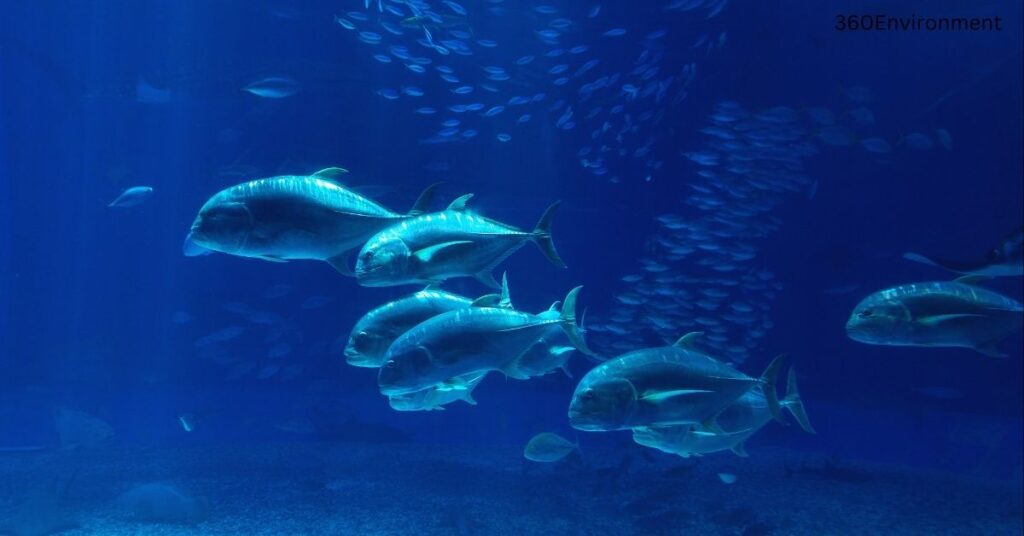
5.1. Role in Nutrient Cycling
As a migratory species, skipjack tuna play a key role in nutrient cycling within the ocean. Their movements across vast distances help transport nutrients between different regions of the ocean, supporting the productivity of marine ecosystems.
- Nutrient Transfer: By feeding in nutrient-rich upwelling zones and migrating to other areas, skipjack tuna help redistribute nutrients throughout the ocean. This process supports the growth of phytoplankton and other primary producers, which form the base of the marine food web.
- Fertilization of Surface Waters: When skipjack tuna return to the surface to spawn, they release nutrients in the form of waste products, which fertilize the upper layers of the ocean. This contributes to the productivity of surface waters, supporting the growth of plankton and other marine organisms.
5.2. Impact on Prey Populations
Skipjack tuna play a key role in controlling the populations of small schooling fish, cephalopods, and crustaceans. Their predation helps prevent these populations from becoming too large, which could lead to overgrazing of plankton and other primary producers.
- Regulation of Small Fish Populations: By preying on species such as anchovies and sardines, skipjack tuna help maintain the balance of marine ecosystems. Without their predation, small fish populations could grow unchecked, leading to a depletion of plankton and other food sources.
- Trophic Cascades: The removal of skipjack tuna from an ecosystem can have cascading effects throughout the food web. For example, the overfishing of skipjack tuna could lead to an increase in the populations of their prey, which could in turn reduce the abundance of plankton and disrupt the balance of marine ecosystems.
6. Human Impact and Conservation of Skipjack Tuna
Skipjack tuna are one of the most heavily fished species in the world, accounting for a significant portion of global tuna catches. While their populations are currently considered stable, overfishing, habitat degradation, and climate change pose long-term threats to the species.
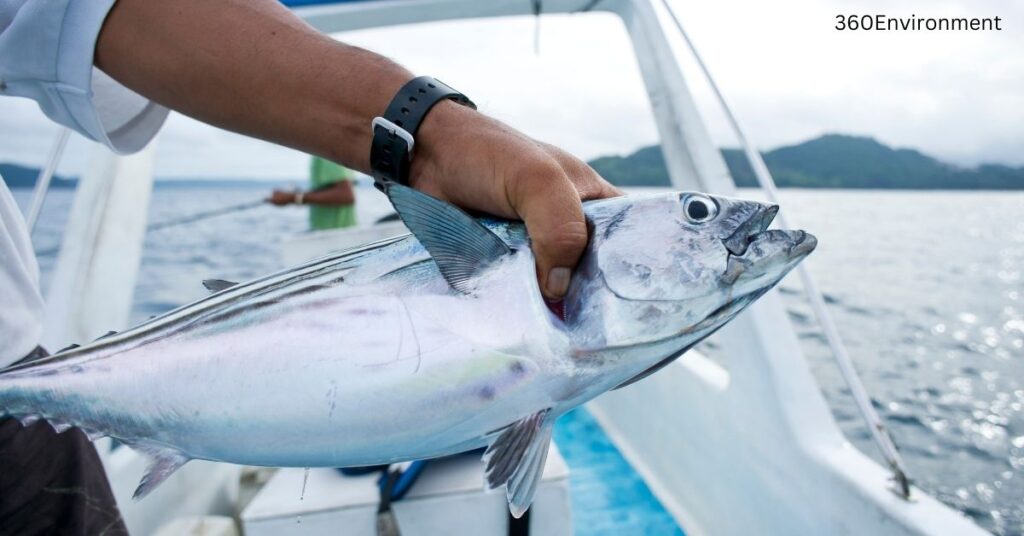
6.1. Commercial Fishing and Overexploitation
Skipjack tuna are a major target of the global fishing industry, with millions of tons caught each year for both canned tuna and fresh consumption.
- Purse Seine Fishing: The most common method of catching skipjack tuna is purse seine fishing, which involves encircling schools of tuna with a large net. This method is highly efficient but can lead to the capture of non-target species, such as dolphins, sharks, and other marine life.
- Bycatch and Ecological Impact: One of the major concerns associated with skipjack tuna fishing is bycatch, which refers to the unintentional capture of non-target species. Bycatch can include endangered species, such as sea turtles and dolphins, which can be harmed or killed in the process.
- Sustainability Concerns: While skipjack tuna populations are currently considered stable, overfishing remains a concern. Sustainable management practices, such as the use of FAD-free fishing methods and the establishment of marine protected areas, are critical to ensuring the long-term health of skipjack tuna populations.
6.2. Climate Change and Its Impact on Skipjack Tuna
Climate change poses a significant threat to the environmental niche of the listao tuna, particularly through rising ocean temperatures and changing ocean currents.
- Rising Sea Temperatures: As ocean temperatures rise, the distribution of skipjack tuna is likely to shift towards higher latitudes. This could disrupt traditional fishing grounds and lead to changes in the availability of skipjack tuna for commercial fisheries.
- Ocean Acidification: Climate change is also causing ocean acidification, which can impact the health of marine ecosystems and the availability of prey species for skipjack tuna. Acidification can reduce the abundance of plankton and other small organisms, which form the base of the marine food web.
6.3. Conservation Efforts and Sustainable Fishing Practices
To protect skipjack tuna populations and ensure their long-term sustainability, a variety of conservation measures have been implemented at both the national and international levels.
- Regional Fisheries Management Organizations (RFMOs): RFMOs are international organizations responsible for managing and conserving tuna and other highly migratory fish species. These organizations establish quotas, regulate fishing practices, and monitor the health of skipjack tuna populations.
- Marine Protected Areas (MPAs): MPAs are designated areas of the ocean where fishing and other human activities are restricted or prohibited. These areas provide refuge for skipjack tuna and other marine species, allowing populations to recover and thrive.
- Sustainable Certification: The Marine Stewardship Council (MSC) and other certification programs promote sustainable fishing practices by certifying fisheries that meet specific environmental standards. Consumers can support sustainable fisheries by choosing tuna products with MSC certification.
Conclusion: The Environmental Importance of Listao Tuna
The listao tuna plays a critical role in marine ecosystems, contributing to nutrient cycling, regulating prey populations, and supporting the health of ocean habitats. Its adaptability to diverse environmental conditions and its importance to global fisheries make it a key species both ecologically and economically.
However, the continued sustainability of skipjack tuna populations depends on effective management and conservation efforts. By understanding the environmental niche of listao tuna and implementing sustainable fishing practices, we can ensure that this important species continues to thrive in the face of growing environmental pressures.
Read More: Understanding What do Carp Eat: A Detailed Look at Their Feeding Behavior

